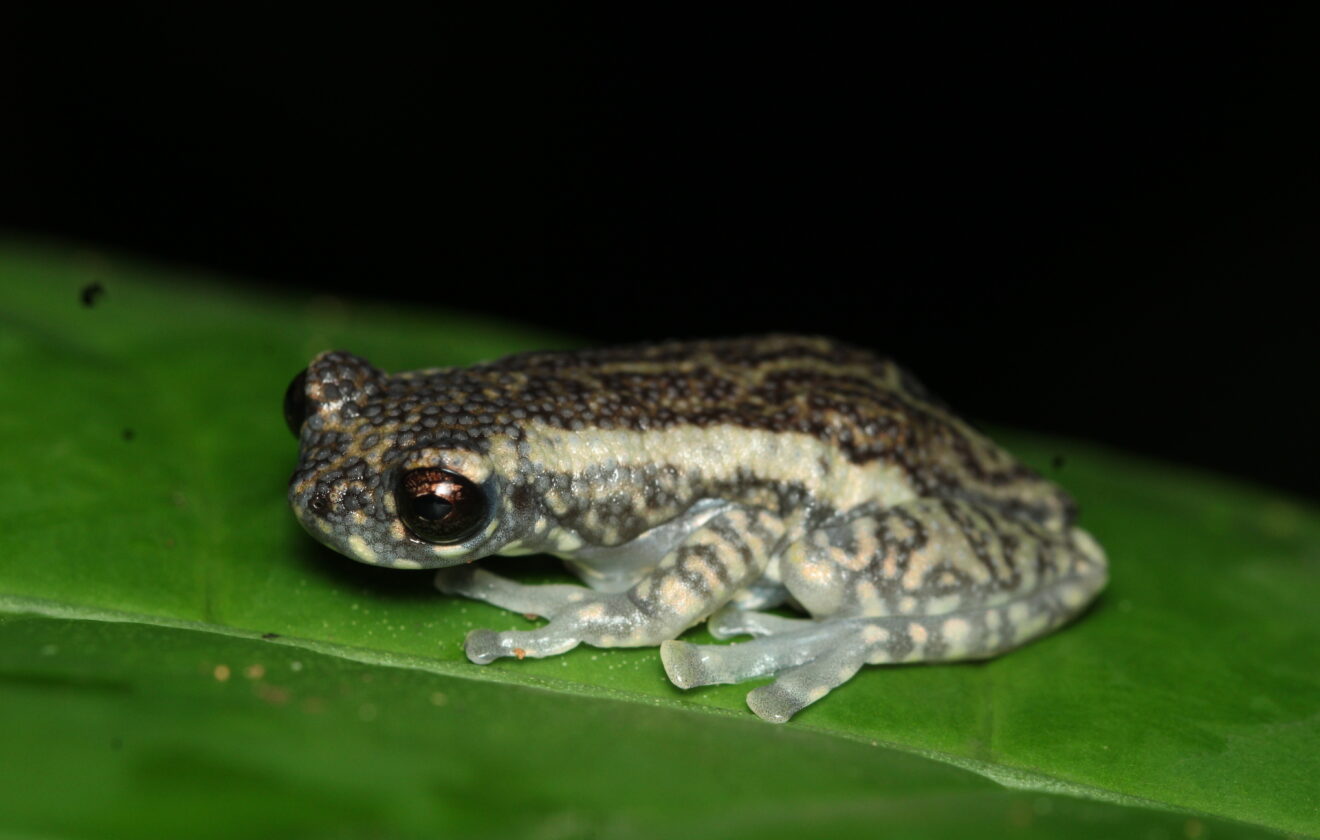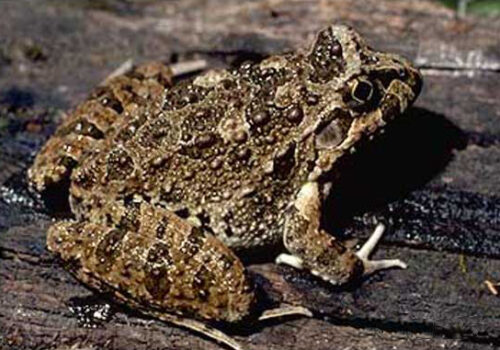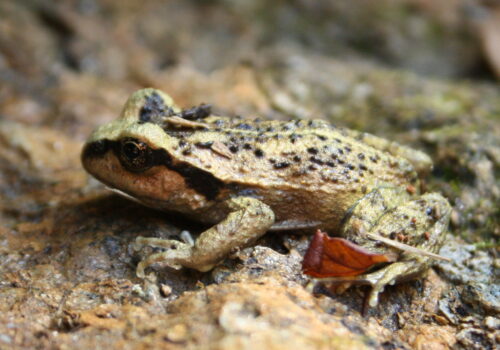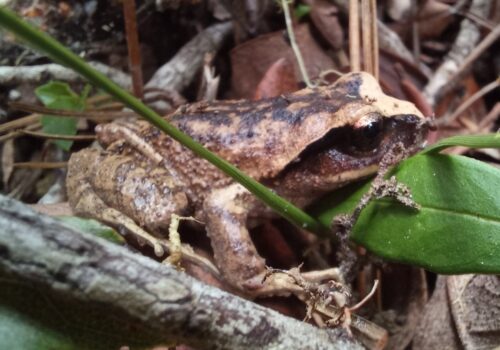- <<a href="/?p=4829">Allophryne resplendens</a>="/?p=4828">Allophryne relicta</a>'s Frog (Allophryne ruthveni): A Jewel of the Rainforest
- Taxonomy and Classification: Placing the Jewel within the Frog Family Tree
- The Natural Habitat: A Realm Shaped by Shadows and Moisture
- Physical Characteristics: Nature's Shining Spectacle
- Behavior and Life Cycle: Navigating the Secret World of the Canopy
- Ecological Role: An Indispensable Puzzle Piece in Rainforest Ecosystems
- Threats and Conservation Status: A Jewel at Risk
- Cultural and Scientific Significance: Honoring Nature's Quiet Innovator
- Conclusion: Preserving A Hidden Treasure of Nature
<Allophryne resplendens=”/?p=4828″>Allophryne relicta‘s Frog (Allophryne ruthveni): A Jewel of the Rainforest#
Hidden within the lush foliage of South America’s tropical forests exists a miniature marvel of nature, quietly exhibiting an exquisite blend of color, adaptation, and ecological ingenuity. The Ruthven’s Frog, scientifically known as Allophryne ruthveni, is one of those remarkable yet seldom celebrated amphibian species that captivate naturalists and wildlife enthusiasts alike. Named in honor of eminent naturalist Alexander Grant Ruthven, this delicate frog has long stirred curiosity due to its cryptic nature and distinctive attributes.
A curious trait that often enthralls anyone lucky enough to encounter Ruthven’s Frog is its stunning iridescence. Under the dim forest canopy—amid shifting rays of sunlight and dancing shadows—this tiny amphibian shimmers beautifully, exhibiting patterns seemingly carved from precious gems. Despite its uniquely appealing physical traits, much of its natural history remains a mystery, making every interaction zoologists have with Allophryne ruthveni feel like discovering a hidden treasure.
Taxonomy and Classification: Placing the Jewel within the Frog Family Tree#
Allophryne ruthveni belongs to an intriguing but poorly understood family of amphibians known as Allophrynidae. Initially recognized as a distinct species by Gaige in 1926, Ruthven’s Frog remained an enigmatic member of its lineage for decades. The genus Allophryne itself was long thought monotypic, meaning that it contained only this single species, until recent DNA analyses revealed more complex relationships with other frog families.
Scientists today recognize the family Allophrynidae as a fascinating evolutionary offshoot. Close genetic relationships link these frogs to certain groups known as glass frogs (family Centrolenidae), but a distinct evolutionary path separates them clearly. These taxonomic revelations shed valuable light on amphibian evolution, illustrating how the obscure Ruthven’s Frog plays a pivotal role in understanding frog biodiversity—a critical consideration for conservationists and biologists across the globe.
The Natural Habitat: A Realm Shaped by Shadows and Moisture#
Under towering trees draped heavily in ferns and lianas, deep within the Amazon Basin and Guyana Shield, you might be fortunate enough to glimpse Ruthven’s Frog. Its geographic range primarily encompasses remote regions across northern Brazil, southern Venezuela, Guyana, and Suriname. These remote and humid forests represent ideal habitats, carefully structured ecosystems cloaked in eternal twilight and vibrating with life.
A Life Under Canopy’s Protection#
Unlike many frogs that prefer proximity to visible forest streams or ponds, Ruthven’s Frog inhabits more cryptic niches, often choosing branches, leaves, or moist crevices within dense vegetation well above the forest floor. This arboreal, canopy-focused lifestyle provides important advantages: refuge from predators, a stable microclimate with elevated humidity, and optimal vantage points for catching insect prey. The frog’s habitat preference requires very specific environmental conditions, typified by consistently high humidity and stable temperatures conducive to its delicate skin physiology and reproductive needs.
Observations suggest that the frogs depend significantly on moist microhabitats—leaves laden with dew, moss-covered branches, and distinctive epiphyte clusters—for the absorption of water and moisture needed to sustain life processes. Recognizing and preserving these forest microhabitats is crucial for maintaining stable Allophryne ruthveni populations.
Physical Characteristics: Nature’s Shining Spectacle#
The physical beauty and striking coloration of Ruthven’s Frog have set it apart among amphibian enthusiasts. Typically compact at about just 2 to 3 centimeters in length, these frogs boast slender limbs and large, expressive eyes perfectly suited for nocturnal life. Their skin texture, usually smooth with subtle granular patterns, belies intricate microscopic structures directly linked to moisture control and protection against environmental dryness.
Living Iridescence and Camouflage Mastery#
Perhaps most captivating is the species’ unique color palette, often described as a living dreamscape of greens, yellows, and shimmering golden hues. Its remarkable iridescent skin seems to glow softly in dim or moonlit forests, often shifting subtly as the frog moves—an adaptation likely associated both with effective camouflage among wet leaves and possibly even social signaling with conspecifics.
An evolutionary result of selective pressure, this exquisite coloration serves multiple survival functions. By day, the frog remains hidden, blending seamlessly into the dense greenery. At night, the deceptive visual effects of its patterned skin may confuse potential predators, granting those few precious seconds needed for survival. Such artful camouflage highlights the brilliance behind the evolutionary strategies the Ruthven’s Frog possesses to thrive amidst nature’s complexities.
Behavior and Life Cycle: Navigating the Secret World of the Canopy#
Research into the life and behavior of Allophryne ruthveni is still being pieced together, with many aspects awaiting discovery. However, scientists have started to unlock fascinating secrets about their behavior and intriguing life cycles. Most active during humid evenings, these unobtrusive amphibians emerge quietly from daytime hiding to hunt.
Nighttime Predator and Ingenious Hunter#
Ruthven’s Frogs are primarily insectivores, selectively feeding on small insects like flies, moths, ants, and beetles. Their excellent vision, a common trait among tree-dwelling frogs, facilitates precision hunting. Standing poised atop leaves, they rapidly propel themselves at prey using strong hind legs, capturing meals with sticky and rapidly deploying tongues.
Breeding Strategies and Reproductive Mystery#
Little is conclusively known about their detailed reproductive behaviors, and it remains one of the compelling mysteries about these creatures. Yet, like their close relatives in related amphibian groups, they likely utilize moist vegetation or water-filled leaf axils, commonly called phytotelmata, to lay eggs. Tadpoles presumably hatch and develop in these small water-holding environments, where nutrients and moisture help them grow into their adult forms in safety away from aquatic predators typically preying on more conspicuous frog larvae.
Ecological Role: An Indispensable Puzzle Piece in Rainforest Ecosystems#
Though diminutive in size, Ruthven’s Frog fulfills a crucial ecological position within its forest home. They act as both predators and prey, forming an essential link within complex food webs. As voracious consumers of canopy insects, these amphibians help regulate insect populations, thereby influencing entire trophic cascades within their humid habitat niches.
In turn, their presence delivers benefits to a variety of predators, including arboreal snakes and birds specialized for locating their hidden quarry. Additionally, because amphibians are highly sensitive to environmental change, Ruthven’s Frog serves as a potent bioindicator species, alerting researchers to potential ecological imbalances arising from subtle climate variations or human encroachment.
Threats and Conservation Status: A Jewel at Risk#
While no immediate extinction risk currently threatens Allophryne ruthveni according to the International Union for Conservation of Nature (IUCN), habitat loss and environmental degradation continue to impact suitable habitats across the Amazon. Expanding human activities—logging, agriculture, mining, and climate shifts—pose looming threats to delicate ecosystems upon which this irreplaceable species depends.
The conservation of Ruthven’s Frog aligns closely with protecting the Amazon Rainforest and its canopy systems, ensuring sustainable habitat management that preserves the integrity of diverse species assemblages. Organizations worldwide support ongoing monitoring and research efforts aimed at securing these hidden treasures for generations to come.
Cultural and Scientific Significance: Honoring Nature’s Quiet Innovator#
The cultural and scientific importance of Ruthven’s Frog transcends mere aesthetic appreciation. Named in honor of herpetologist Alexander Grant Ruthven, whose pioneering work greatly advanced our understanding of biodiversity, the frog itself symbolizes scientific discovery, appreciation for biodiversity, and the rich yet fragile natural heritage of tropical forests.
Conclusion: Preserving A Hidden Treasure of Nature#
The enchanting Ruthven’s Frog continues to quietly amaze those fortunate enough to witness its shimmering beauty, cryptic habits, and critical ecological significance. Protecting these arboreal amphibians requires committed conservation action, increased scientific research, and ongoing education. By understanding and celebrating creatures such as Allophryne ruthveni, we not only champion biological diversity and vibrant forest ecosystems but also rekindle our broader connection with the natural world around us.
Discover more about related rainforest biodiversity in our article Amazon Canopy Wonders or support conservation through actions highlighted in Frog Conservation: What You Can Do.
















